The Best Movie Moments of 2023
- Oops!Something went wrong.Please try again later.
- Oops!Something went wrong.Please try again later.
- Oops!Something went wrong.Please try again later.
- Oops!Something went wrong.Please try again later.
- Oops!Something went wrong.Please try again later.
- Oops!Something went wrong.Please try again later.
- Oops!Something went wrong.Please try again later.
- Oops!Something went wrong.Please try again later.
- Oops!Something went wrong.Please try again later.
- Oops!Something went wrong.Please try again later.
- Oops!Something went wrong.Please try again later.
- Oops!Something went wrong.Please try again later.
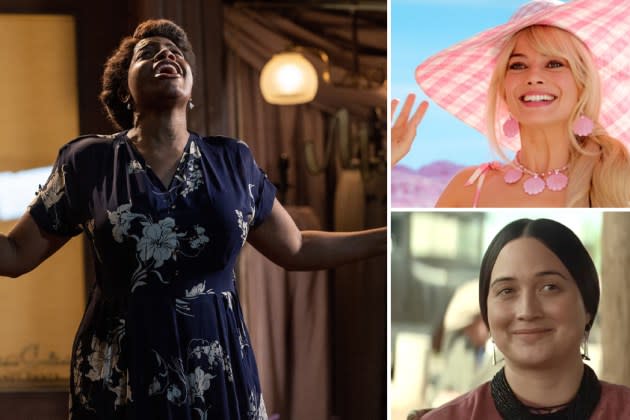
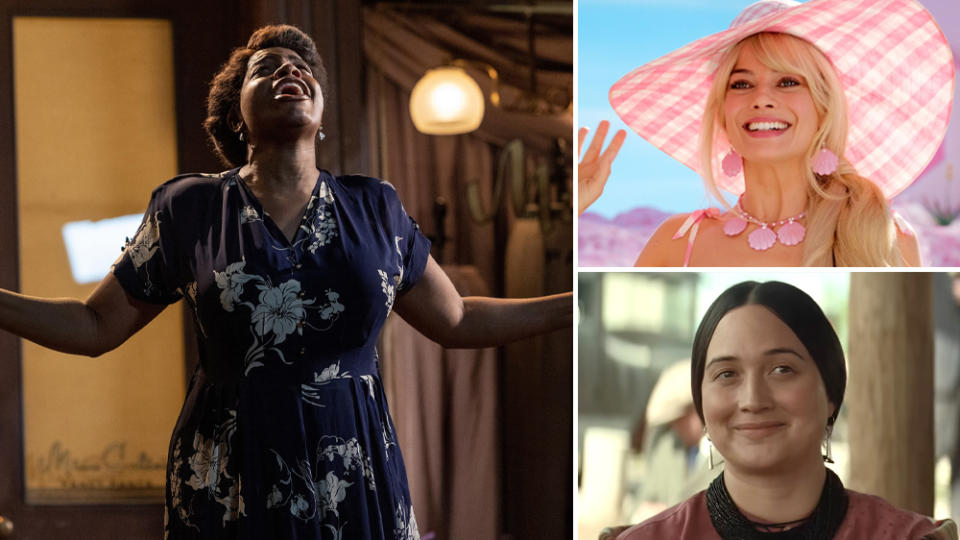
As awards season ramps up and the best picture race begins to narrow, Variety staffers reflected on some of the most standout scenes from the year’s top contenders.
More from Variety
For 2023, there’s been no shortage of imaginative and inspiring storytelling crafted by both award-winning pros and newcomers — and each one has gifted audiences memorable scenes that have left us laughing, crying, and with plenty to think about long after the credits have rolled.
Air
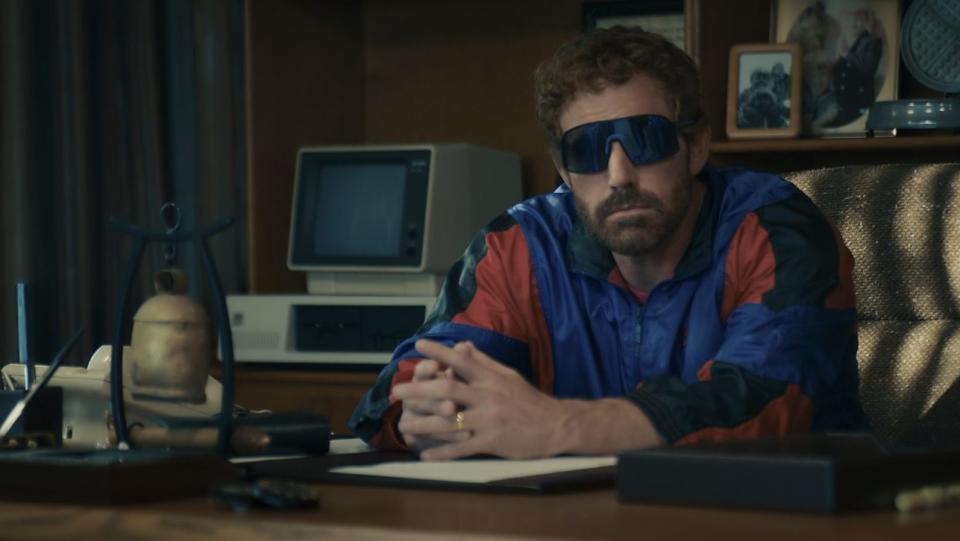
(Amazon MGM Studios)
Of the many powerful moments in Ben Affleck’s “Air,” the film’s true linchpin is a scene between Nike execs Sonny Vaccaro (Matt Damon) and Rob Strasser (Jason Bateman) where Vaccaro literally freeze-frames the moment Michael Jordan became a star. Scanning a replay of the 1982 NCAA championship game in which Jordan scored the winning shot, Vaccaro zeroes in on the ease and comfort the then-scrawny college player displays under pressure, a sign of things to come. After going third in the 1984 NBA draft, Jordan was largely counted out in comparison to his higher-scoring counterparts. But Vaccaro crucially identifies that he possesses more than talent. Even then, Jordan embodied a kind of greatness that comes along once a generation, or even lifetime, and that discovery becomes the fuel that drives Vaccaro’s willingness to gamble not only on his own future, but Nike’s, on landing an endorsement deal that would make their company forever synonymous with a bona-fide legend.
— Todd Gilchrist
American Fiction
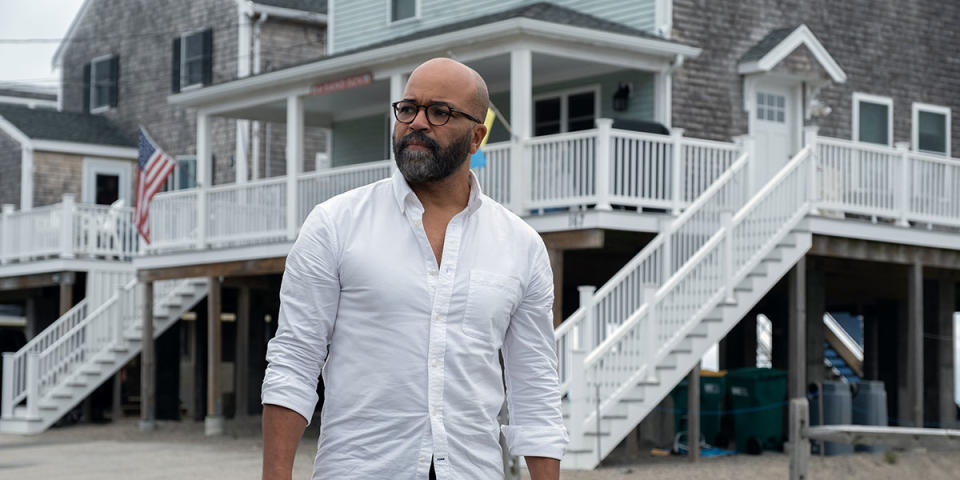
(MGM)
The satire in Cord Jefferson’s “American Fiction” really takes comedic flight when Jeffrey Wright’s Monk talks with eager publishers on the phone at his agent’s office. By this point, Jefferson has established the prickly rapport between Monk and his agent Arthur, who has been encouraging the frustrated writer to make his writing more Black and therefore more marketable. But neither is prepared for the response to Monk’s fake memoir “My Pafology,” written in street vernacular under a pseudonym. Arthur, nimbly portrayed by John Ortiz, eggs Monk on as the camera cuts back and forth between them and two white publishers. When the bearded half of the white pair awkwardly describes the headgear Michael B. Jordan, potential star of a movie adaptation of the memoir, could wear on the cover, Wright’s Monk incredulously interjects: “a do-rag?” From that moment, there is no going back for Monk, even if he wished there was.
— Diane Garrett
Anatomy of a Fall
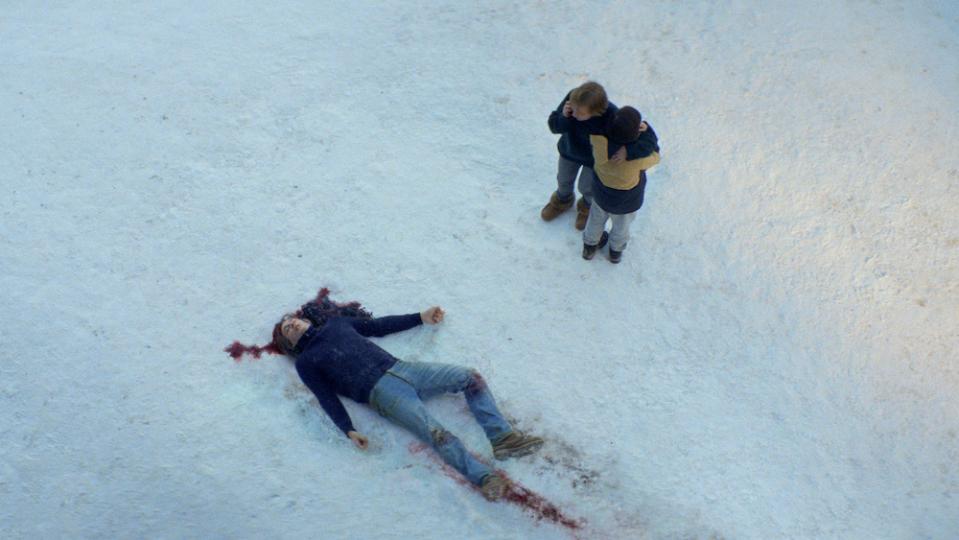
(Neon)
Justine Triet’s Cannes Palme d’Or-winning drama delivers a nuanced take on an old trope: the trial movie. But Triet, her co-writer Arthur Harari and lead actor Sandra Hüller (playing a woman named Sandra) give audiences a twisting tale of a broken marriage, egos, misogyny in the courts and family breakdown that comes to light after Samuel (Samuel Theis) is found dead outside the family chalet. Did Sandra kill him? Did he fall out the window? As the film unfolds over more than 2 ½ hours, each minute resonates. None more so than when it focuses on Daniel, the prepubescent son of Sandra and Samuel. Played by Milo Machado Graner, Daniel is sight-impaired, the result of an unfortunate accident that Sandra blames on Samuel. But Daniel’s the one who must reckon with his vision impairment. He’s the one who must act the loving son despite the marriage crumbling around him. He’s the one that finds his father’s dead body in the snow. Graner’s performance conveys inner strength that a kid his age shouldn’t have to tap, but during his courtroom scenes, he’s the heart and soul of “Fall.”
— Carole Horst
Barbie
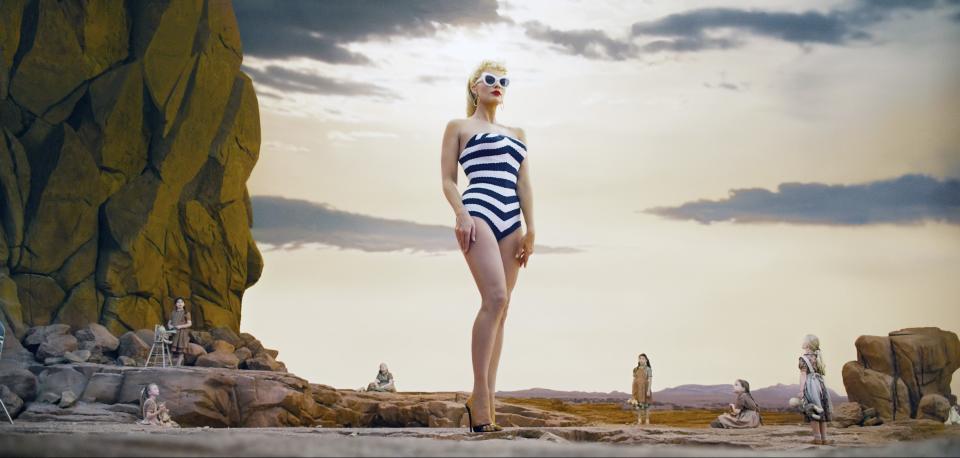
(Warner Bros.)
Although America Ferrera’s feminist speech is hard to beat, there’s one moment that perhaps encapsulates the essence of the “Barbie” movie — the moment Barbie (Margot Robbie) discovers what being human is like. After experiencing an existential crisis, she tells the spirit of her maker, Ruth Handler (Rhea Perlman), that maybe she’s not Barbie anymore. Ruth reminds Barbie that while ideas live forever, humans do not. When Barbie questions if she’s allowed to become human, Ruth says she can’t control Barbie any more than she can control her own daughter, Barbara, whom Barbie was named after. With that gentle acknowledgement of the connection, the scene transitions to an emotionally affecting montage of home footage, focusing on mothers and daughters. It’s underscored by Billie Eilish’s soft, contemplative song “What Was I Made For?,” and the result is an achingly tender tribute to being not only a human, but a human woman.
— Valerie Wu
The Color Purple
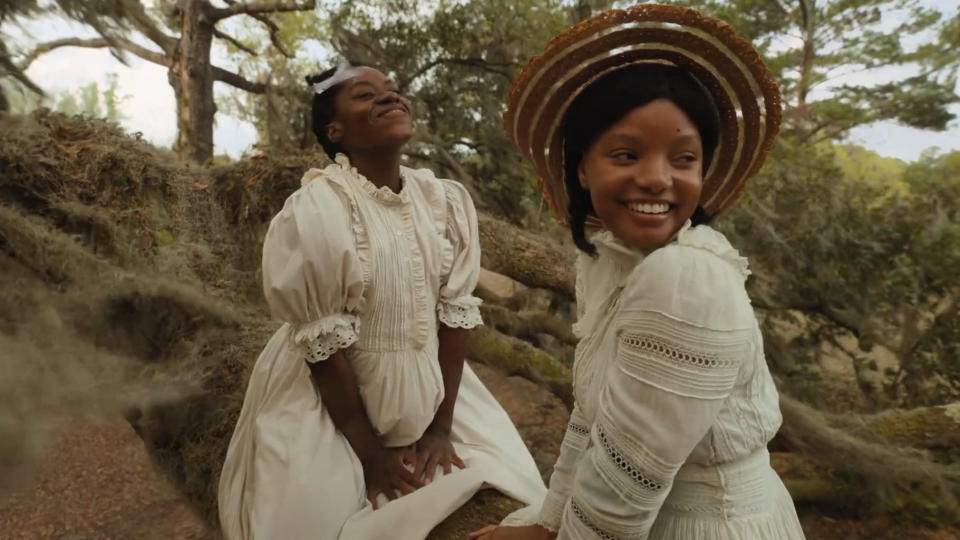
(Warner Bros.)
The film adaptation of the Tony-winning musical from director Blitz Bazawule brims with eye-popping musical numbers, but “Miss Celie’s Pants” is a joyous, fantastical set piece that not only signals Celie’s personal emancipation, it lets the audience know that everything’s gonna be alright. After decades of mental and physical abuse at the hands of Mister (Colman Domingo), Celie (a revelatory Fantasia Barrino) finally finds the confidence to know her own self-worth and she establishes a clothing business, selling her own designs, but especially pants. It’s the 1950s, and pants, of course, symbolize female independence. The song and choreography rise to an ecstatic high, while the costumes dazzle with striking jewel-tone colors and lots and lots of sequins.
— Carole Horst
Ferrari
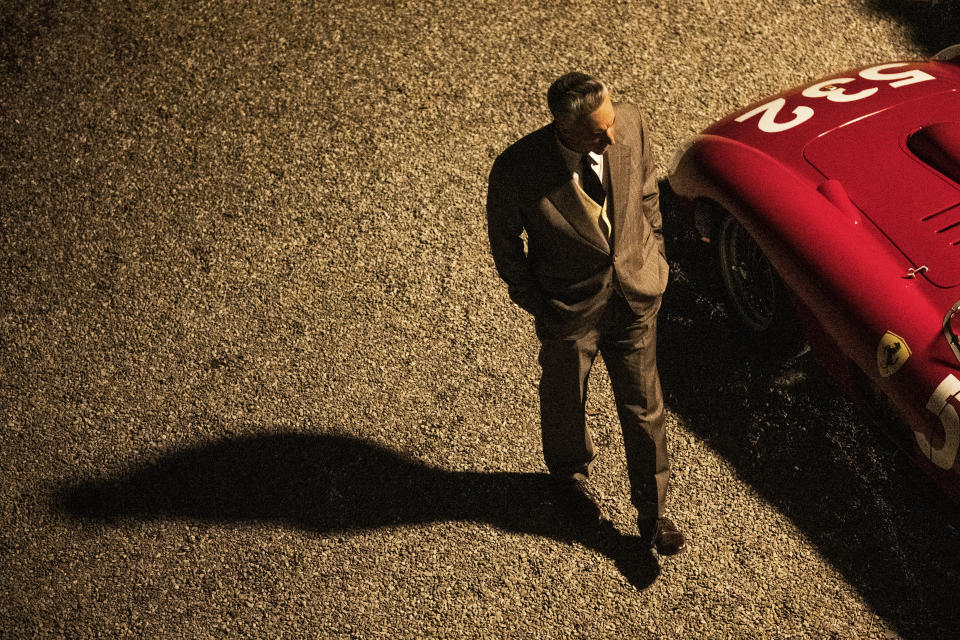
(Neon)
“Ferrari” climaxes with a crash as graphic as any in the history of film, but it’s not the spectacle of the sequence that devastates. Rather, it’s the scene’s emotional underpinnings — an inevitable collision between narrative conflicts and larger themes that begin racing desperately towards each other from the first frame of Michael Mann’s film. After the professional and personal obligations juggled by Enzo Ferrari (Adam Driver), that jaw-dropping moment of destruction forces him to confront not only the possibility of professional and financial ruin, but also the responsibility for exactly the same kind of unimaginable loss — the death of a child — that threw his world into permanent disarray. Mann transforms a gruesome mess of metal, blood and body parts into a meditation on what Enzo hopes to repair in his own life, while offering a reminder of what he knows he
never can.
— Todd Gilchrist
The Holdovers
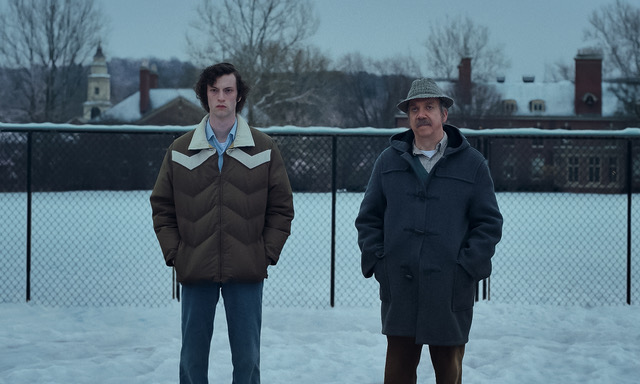
(Focus Features)
“The Holdovers” is an aesthetic feast for fans of late ’60s-early ’70s cinema, complete with snap zooms, celluloid grain and the music of singer-songwriter Cat Stevens. But it’s a Christmas Eve party attended by the three lonely souls at its center, history teacher Paul Hunham (Paul Giamatti), cafeteria administrator Mary Lamb (Da’Vine Joy Randolph) and caustic student Angus Tully (Dominic Sessa) that unveils the textures — and truths — hiding beneath Alexander Payne’s stylistic window dressing. Pulled back into their own solitude and yet bonded by their collective loneliness, each uneasily navigates what is meant to be a space for celebration and camaraderie, the irony (and desperate reality) of being isolated by the converging forces of disposition and circumstance. Payne later redresses their respective wounds, but it’s this scene that spotlights how much sweeter movie moments can be when they’re preceded by something bitter.
— Todd Gilchrist
The Iron Claw
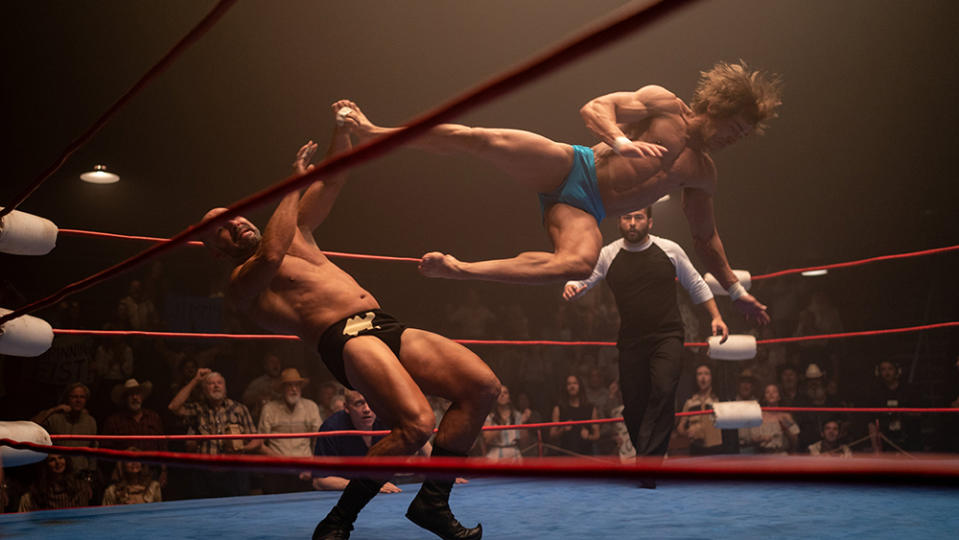
(A24)
The propulsive beat of Rush’s classic anthem “Tom Sawyer” pounds on the soundtrack as the Von Erich brothers parade out into the wrestling ring — all youthful confidence, good looks, charisma and ripped physiques. The brothers — played by Zac Efron, Harris Dickinson and Jeremy Allen White — are making their debut as a trio on the wrestling circuit, and they dominate their opponents in the match. It’s an electrifying and rousing scene that illustrates the power of the familial bonds that keep these brothers tight despite the injuries, fame, a mentally abusive father and other temptations thrown at them in Sean Durkin’s thrilling biopic about the “First Family of Wrestling.” Efron, Dickinson and White are so obviously having a great time and relishing their roles that you’ll want to stand up and cheer their antics in the ring. Durkin has created a great sports movie, and like a great athlete, leaves it all out there.
— C.H.
Killers of the Flower Moon
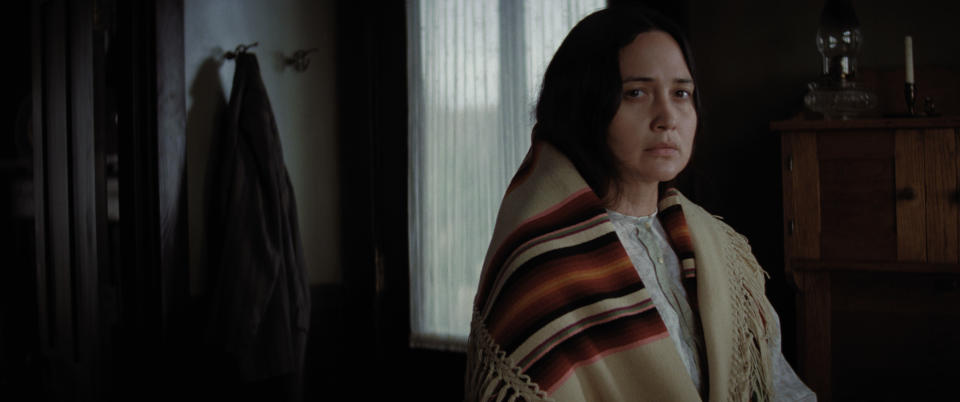
(Apple Original Films/Paramount Pictures)
In a haunting performance, Lily Gladstone plays Mollie Burkhart, a wealthy Osage nation woman whose family are among the many being murdered for their money during history’s “Reign of Terror.” One of the most powerful moments is the final exchange with her husband, Ernest (Leonardo DiCaprio), when she confronts him about poisoning her, and he denies everything and says: “Insulin.” Rodrigo Prieto’s camera has Mollie stand up and walk out of frame as the camera remains on “Coyote,” her nickname for him.
— Jazz Tangcay
Maestro
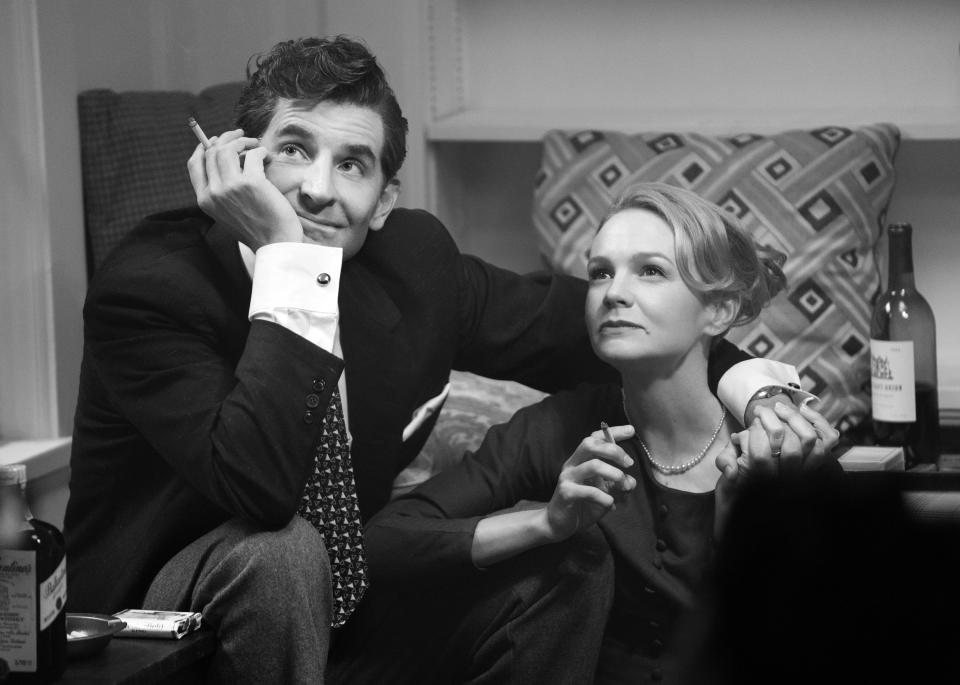
(Netflix)
After opening with a color-drenched scene of white-headed Leonard Bernstein reflecting on his life, “Maestro” triple threat Bradley Cooper flashes back to the beginning of the musician’s career. In a bravura scene shot in black and white, Cooper’s Bernstein is roused from bed by a phone call informing him he will be filling in as conductor. He hangs up and excitedly taps on his lover David’s bare bottom before bursting into the theater directly from his bedroom. The audience is immediately put on notice about the ambition of the character and Cooper as director: There’s nothing restrained about Bernstein’s passions — or Cooper’s visual choices in his second directorial turn. This early scene, followed by other emotionally and visually rich moments such as a fight between Bernstein and wife, Felicia (Carey Mulligan), against the backdrop of the Macy’s Thanksgiving Parade, signals a great leap forward for both.
— Diane Garrett
May December
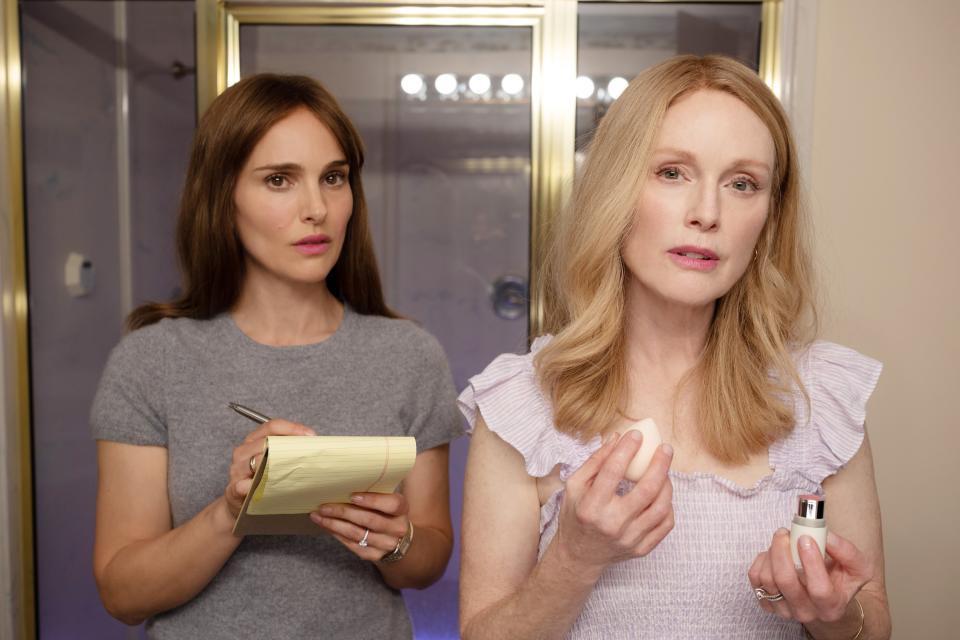
(Netflix)
Directed by Todd Haynes from a Samy Burch script that finds inspiration in the Mary Kay Letournau case, “May December” is unsettling, compelling and often very funny. Rather than focus on the story of a woman in her 30s who seduces a preteen boy, it looks forward to two decades later when the once-tabloid couple now have teenage kids of their own. Natalie Portman is Elizabeth, the actor sent to study Julianne Moore’s Gracie in order to portray her in a movie. The two spend the film in an uneasy dance as Elizabeth studies Gracie and tensions threaten to boil over. In a tour-de-force moment, Portman faces a mirror and practices a speech from the film in Gracie’s voice, complete with a practiced lisp. It’s a meta moment: Portman as an actor playing Moore as a character, and you can’t take your eyes off her.
— Jenelle Riley
Napoleon
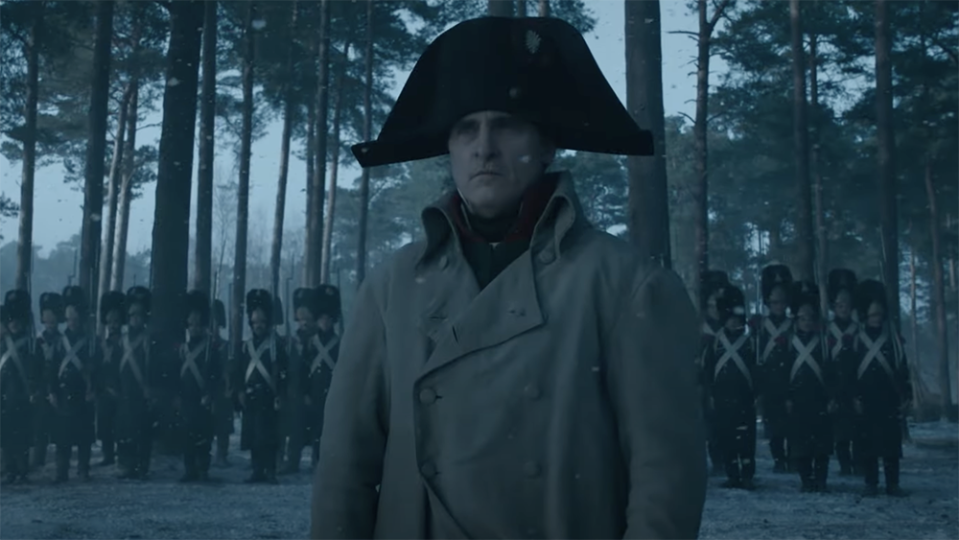
(Apple Original Films/Sony Pictures)
If anyone can pull off a battle scene, it’s Ridley Scott, and there isn’t just one, but a few in “Napoleon.” The most visually striking battle is Austerlitz, the 1805 exchange that took place on a frozen lake between the Russian and French armies. Napoleon’s army fired canons at the Russians, drowning many in the process. Scott entrusted his go-to department heads to deliver the scene, and cinematographer Dariusz Wolski films the action of ice cracking and soldiers drowning. It’s a terrific combination of department heads coming together to pull off such a feat. Perhaps the finest moment of all is that simple hand signal from Joaquin Phoenix’s fearless leader to fire.
— Jazz Tangcay
Oppenheimer
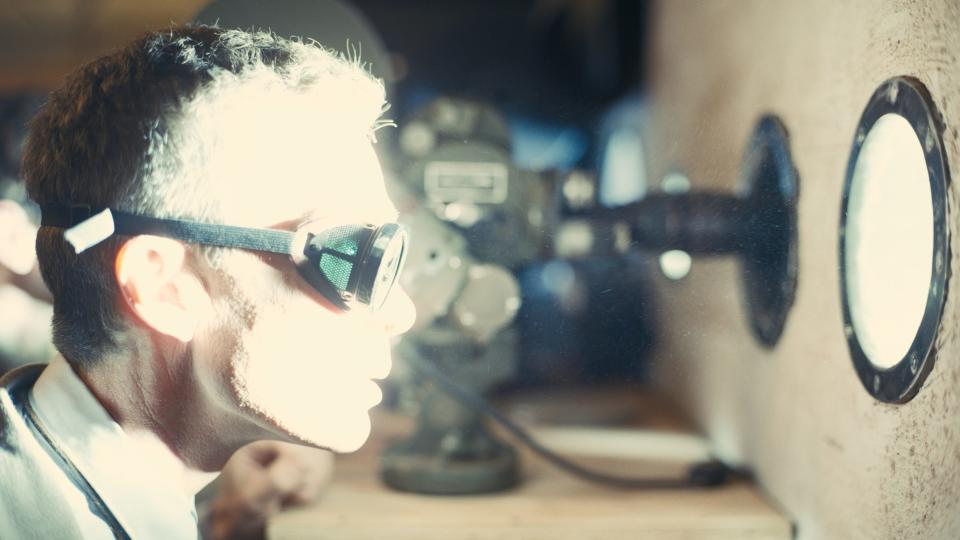
(Universal Pictures)
Sometimes the obvious answer is also the correct one and despite a film full of spectacular moments, it’s hard to top the sequence the whole film seems to be leading up to: The Trinity Test, when J. Robert Oppenheimer and his team finally detonate the atomic bomb. It’s no hyperbole to say it’s a huge moment — there are fears it could literally destroy the world as we know it — and the scene pulses with this urgency. It’s a breathtaking moment from filmmaker Christopher Nolan, who has made a career of blowing audiences’ minds, and it does not disappoint. The reaction might best be summed up by a moment that has already spawned countless memes: Benny Safdie as Edward Teller, slathered in sunscreen and sporting dark glasses, stares on in wonder and disbelief. The scene is all the more impressive if you learn that Nolan pulled it off in-camera — it’s enough to make your jaw drop all over again.
— Jenelle Riley
Origin
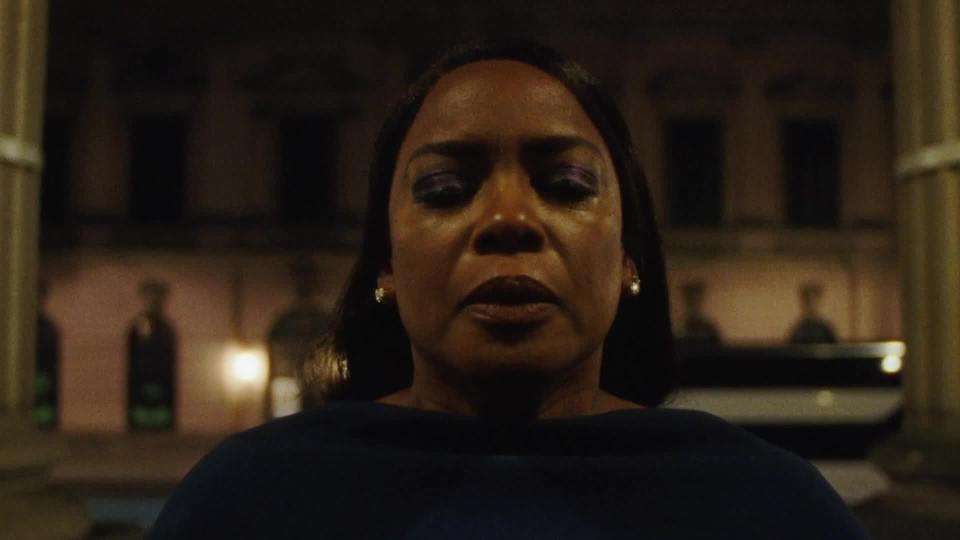
(Neon)
From the Middle Passage to the Holocaust, Ava DuVernay’s powerfully poignant “Origin” journeys through humanity’s darkest moments while telling impactful and heartbreaking stories. As Aunjanue Ellis-Taylor’s Isabel Wilkerson explores the history of caste, the film repeatedly shows the devastating effect it has on people — children included. The film begins with a portrayal of the 2012 killing of 17-year-old Trayvon Martin, an event that sparked nationwide protests and debate about racial profiling. Going back less than a century in the South, white children wave and smile as a sheriff drives by, but Black children shrink in fear. Amid the Holocaust, Jewish families in a concentration camp are ripped apart, children fearfully holding onto one another as they’re taken away from pleading, grieving parents. Then as Ellis-Taylor’s Wilkerson heads to India, the film offers one of its most moving scenes. A young B. R. Ambedkar, a Dalit who defied adversity placed upon him by caste and would later be known as the father of India’s constitution, sits on the floor in the back of a classroom, seen as lesser than his peers and unworthy of basic humanity. Knowing who Ambedkar would become while seeing him at this point in time, untouchable to the point where water must be poured upon him instead of handed to him to drink — that contrast illuminates a powerful message. We may be born into systems of oppression, but we can and must break free.
— Sharareh Drury
Past Lives

(A24)
With the Korean term “in-yun,” or “providence” living at the heart of “Past Lives,” Celine Song’s directorial debut explores the painful tension between fate and free will. Though Nora (Greta Lee) is happily married and living in New York City as a writer, she struggles to let go of her childhood best friend, Hae Sung (Teo Yoo), whom she left behind when her family immigrated from South Korea. He also wonders what could’ve been between them, leading to a reunion in which they attempt to reconcile their unresolved, unrealized feelings for each other. Song deftly builds tension throughout her subtle romantic drama, culminating in a devastating finale. In the last scene, Nora and Hae Sung part ways, leaving on the note that they might have a different relationship in another life. Walking back to her apartment, Nora begins to cry uncontrollably as she mourns the life she left behind. The delayed gratification of her long-awaited emotional release is not lost on viewers, who have no choice but to cry alongside her, left to ponder the “what ifs?” that haunt their
own lives.
— Jaden Thompson
Poor Things
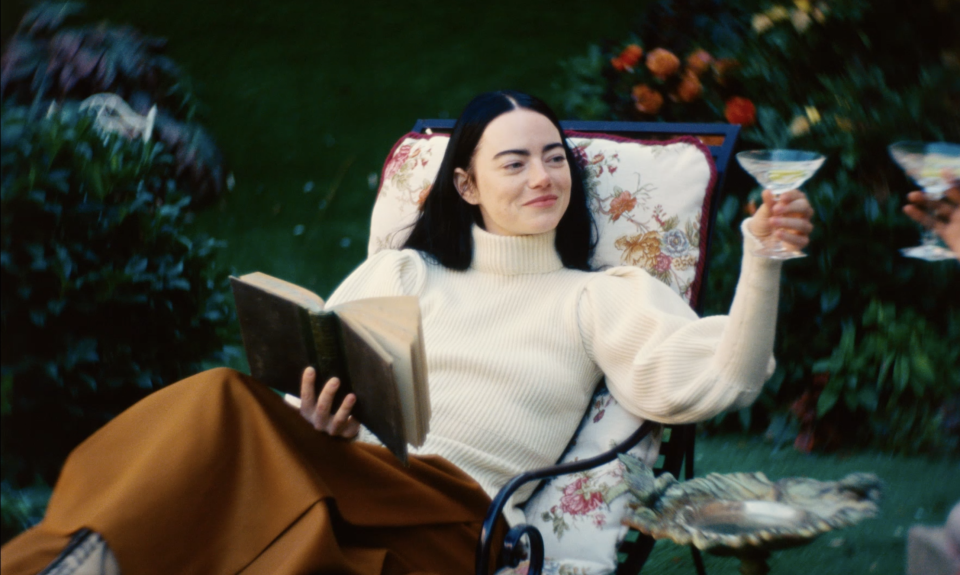
(Searchlight)
Yorgos Lanthimos delivers his own take on Frankenstein: Willem Dafoe plays disfigured scientist Dr. Godwin Baxter — “God” for short. His piece-de-resistance is Bella, woman who is been revived with the brain of her unborn child. Emma Stone is superb as his lab rat, an adult woman dressed by her nanny, Mrs. Primm. Their world is shown in black and white. Bella spends the first quarter of the four chapter film in monochrome. The best sequence comes in Lisbon, when she gloriously steps into this psychedelic-watercolor world. She eats egg tarts, walks around with wide-eyed curiosity as she discovers the world around her and has endless “jumping” sessions with Mark Ruffalo’s Duncan. And thus begins her liberation and journey to empowerment. Her dance sequence with music by Jerskin Fendrix is a wonderfully bizarre sight, but it’s Bella’s journey and we’re just happy to be on this ride with her.
— Jazz Tangcay
Saltburn
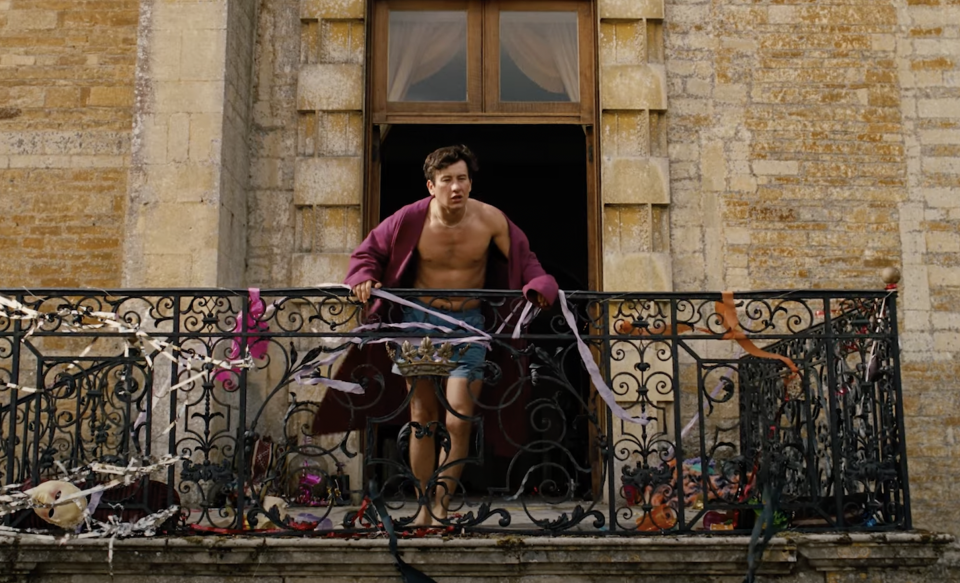
(Amazon MGM Studios)
There are several scenes in “Saltburn” that had the audience gasping in disgust while laughing at the absurdity of it all. By embedding these moments throughout the film, Emerald Fennell prepares audiences for the final sequence. After it is revealed that Barry Keoghan’s Oliver Quick has murdered the entire family of his Oxford classmate Felix (Jacob Elordi), he inherits their estate — the one Felix so kindly invited him to visit. To celebrate, Ollie dances around naked in his new home to “Murder on the Dancefloor” by Sophie Ellis-Bextor. With our protagonist’s intentions finally clear, you can’t help but sit there feeling both horrified and impressed by the scheme he was able to pull off. Solidifying the movie’s tone, the scene is so dark and fun that you almost want to celebrate with Ollie, despite knowing of his murderous actions.
— Caroline Brew
Spider-Man: Across the Spider-Verse

(Sony Pictures)
In this sequel to “Into the Spider-Verse,” Miles Morales learns about “canon events” while at Spider HQ. An integral one for all Spider-People is the loss of a parental figure and the death of a police captain. Despite being told that interfering with canon events could result in the destruction of the entire multiverse, Miles is unable to fathom that his own father, who is about to become captain, must die and that he must accept that as just one unfortunate aspect of being Spider-Man. What comes next can only be described as cinematic insanity, with Miles being chased by hundreds of Spider-People (and yes, Spider-Animals) as he tries to make it back to his universe. That scene took four years to create and solidifies the film’s ability to deliver boundary-pushing
visual effects.
— Sharareh Drury
The Zone of Interest
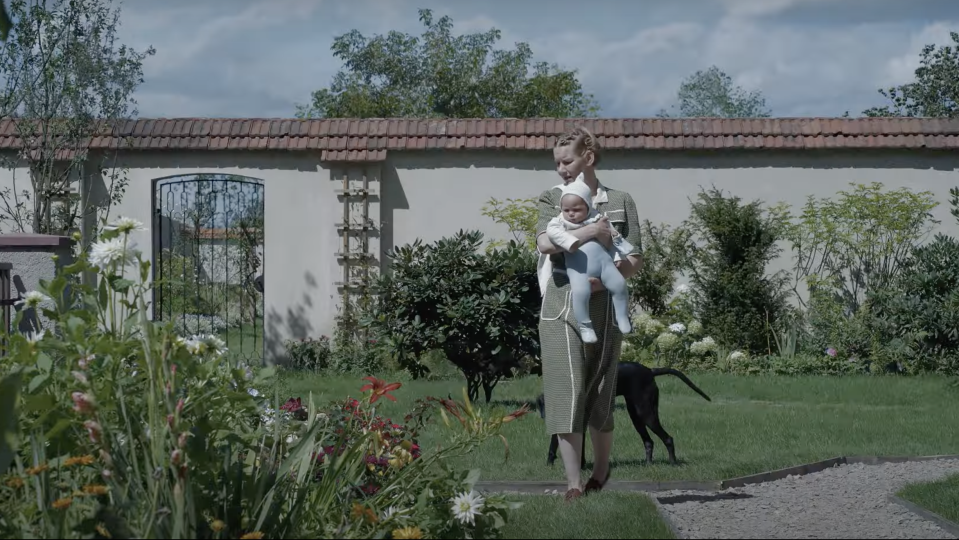
(A24)
There are many striking scenes in Jonathan Glazer’s drama about the commandant of Auschwitz and his family. We never see any scenes in the concentration camp, but we do hear the screams, gunfire and ovens working overtime. We are there to see the home life of Rudolf Höss and his super-homemaker wife, Hedwig, and their children. But early on, the membrane between their idyllic days in the beautiful Polish countryside where they live out their bourgeois dreams next to the horrors of the camp is pierced as Rudolf fishes in a river while his children play in the shallows. Suddenly, a human jawbone bumps into him. He panics, realizes that the river is polluted from the cremated camp bodies, gathers his kids — and back at the house, everyone is thoroughly scrubbed although no one acknowledges the cause. We see the aftermath of the cleansing, knowing that it’s human remains, even as the family carries on with the banality of their “perfect” life.
— Carole Horst
Best of Variety

